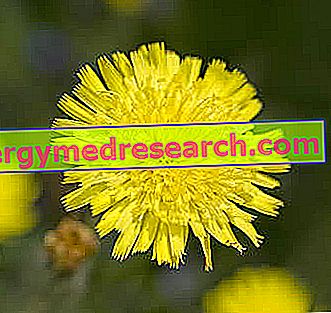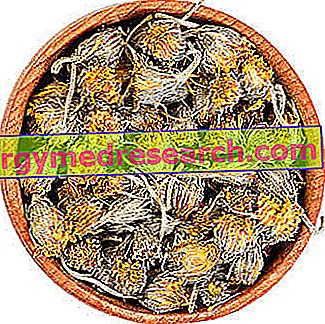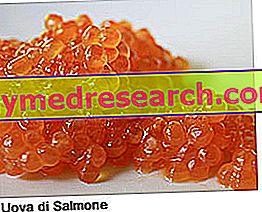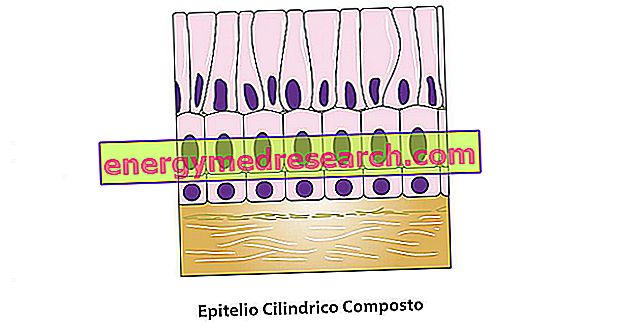Generality
Botany and description of the pilosella
The pilosella or pelosella (botanical name Hieracium pilosella ) is a bristly and perennial herbaceous plant, belonging to the Composite family ( Asteraceae ).

The science that deals with the use of vegetable medicines for the treatment of human diseases, known to most as phytotherapy, attributes to the pilosella diuretic , antibiotic and anti-inflammatory properties .
The pilosella drug, endowed with the aforementioned phytotherapeutic properties, is represented by the entire flowering plant . One of its most known components is umbelliferone, a coumarin compound with antibiotic potential useful in the treatment of brucellosis.
Indications
When to use pilosella?
The pilosella is recommended especially in case of:
- Brucella infection
- Asthma
- Bronchitis
- Cough
- Pertussis
- Water retention (cellulite and edema)
- Biliary colic
- Wounds (for topical use).
More scientific evidence is needed to demonstrate the effectiveness of the mouse ear for these uses.
Property and Effectiveness
What benefits has pilosella shown during the studies?
Modern phytotherapy attributes to the hairless property:
- diuretic
- Coleretic and cholagogue
- antibiotic
- Anti-inflammatory and antispasmodic
- UV shields.
Diuretic properties of pilosella
The diuretic and draining properties of the pilosella, mainly attributable to the flavonoids (luteoloside), are universally known, and make it useful in the treatment of various conditions or pathologies (in the latter, in the form of an adjuvant).
- The pilosella is particularly useful in the presence of uric stones; helps to purify the blood from the excesses of a diet rich in animal proteins and in particular in purines (contained above all in sardines, anchovies, sausages and offal).
- It is also useful in the treatment of imperfections caused by the accumulation of liquids, such as: cellulite, swelling of the ankles, edema of the lower limbs and, more generally, water retention.
- Thanks to its ability to reduce blood volume, it can help control mild hypertension.
- By promoting diuresis, the pilosella is useful in the presence of urinary infections, such as cystitis and urethritis, because it facilitates the elimination of pathogens with urine.
Choleretic and cholagogue properties of the pilosella
The ability to promote bile excretion and outflow is also recognized at the pilosella (which has a choleretic and cholagogue action), which contributes to liver detoxification.
Antibiotic property of the pilosella
One of its most known components is umbelliferone, a coumarin compound with antibiotic properties, useful in the treatment of brucellosis. Also known as Maltese fever, brucellosis is a bacterial infectious disease typical of some animal species, which transmit it to humans either directly or indirectly (through the consumption of infected foods, such as milk and fresh cheeses).
Anti-inflammatory and antispastic properties of the pilosella
The pilosella has some anti-inflammatory and antispasmodic properties.
In particular, extracts of his drug have been used in the treatment of asthma and bronchitis, as well as to relieve inflammation of the kidneys or urinary tract in general.
UV ray shielding property
In the cosmetic field, the pilosella - thanks to its umbelliferone content - is part of many topical sun protection preparations.
Doses and Mode of Use
How to use pilosella?
The pilosella is mainly used orally (except for wounds and for the formulation of sunscreens); it is taken primarily for aesthetic purposes in the fight against water retention, swelling of ankles and legs, and cellulite.
The methods of use per os are the infusion, the capsules and the liquid extract.
- Infusion: 5-10 grams of dry pilosella in 1 liter of boiling water; let infuse for 10 minutes. The recommended dose is one cup in the morning and one at noon.

- Capsules: they contain on average 200 mg of pilosella in dry extract. It is recommended to take 2 in the morning and two at noon with a glass of water.
- Liquid extract: to be taken in quantities of 30 drops three times a day, diluted in a glass of water.
Side effects
To date, no toxic side effects have been reported, even after prolonged use.
However, it is advisable not to exceed the recommended dosage.
Contraindications
When shouldn't the pilosella be used?
The only known contraindication is in case of specific allergy; other plants belonging to the botanical family of the Asteraceae (chrysanthemums, daisies, etc.) are often also implicated.
Pharmacological Interactions
Which drugs or foods can modify the effect of the pilosella?
Pilosella can cause some undesirable effects, if associated with synthetic diuretic drugs (or supplements).
In truth, we are not talking about a real chemical interaction, but rather an amplification of the result. The parallel use of diuretic and pilosella products could cause an excess of filtration and renal excretion, with consequent systemic dehydration.
Diuretics are pharmacological principles (synthetic or natural) used for the treatment of various diseases, such as hypertension, edema, ascites, etc. or blemishes such as water retention, cellulite, etc. However, it is important to emphasize that, although they positively intervene on these diseases or conditions, their application has a safety limit.
To understand, the therapeutic effect is not directly proportional to the dose, which, if in excess, can trigger serious side effects. This is why, especially in the clinic, we prefer to associate more drugs with different mechanisms.
Ultimately, the use of pilosella as a phytotherapeutic remedy is recommended ONLY in the absence of other diuretics.
Precautions for Use
What do you need to know before taking the pilosella?
At the recommended doses, pelosella is a safe plant; however it is important to avoid its use during pregnancy and lactation (for precautionary purposes).
To avoid, moreover, the overcoming of the recommended doses and the association with certain drugs without having first consulted your own doctor, who must be consulted even if you want to use the pilosella to treat diseases such as hypertension, brucellosis and gout, even if present in mild form.




